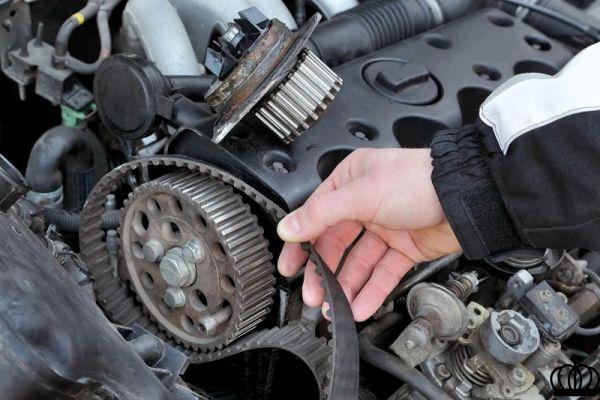
Introduction
Welcome to Pistonudos.com, where we care about providing you with the most complete and updated information on the maintenance of your vehicle. In this article, we will address the various questions related to changing the water pump and the timing belt in a car. These two parts are essential for the correct operation of the engine, so it is important to understand why it is necessary to change them and how to carry out this process properly.
Why is it necessary to change both parts at the same time?
One of the most common questions that arise when considering changing the water pump and timing belt is why it is necessary to do it at the same time. The answer lies in the fact that both parts are closely related and their wear can affect engine performance.
The water pump is in charge of keeping the engine at an optimal temperature, avoiding overheating. On the other hand, the timing belt is responsible for synchronizing the movement of the valves and pistons, allowing the engine to function correctly. If any of these parts fail, it can cause serious engine damage and costly repairs.
Therefore, changing both parts at the same time ensures optimal engine operation and prevents future mechanical problems.
When and how to make the change?
Another frequent question is when and how to change the water pump and timing belt. The answer varies depending on the make and model of the vehicle, as well as mileage and conditions of use.
In general, it is recommended to change the water pump and timing belt every 60.000 to 100.000 kilometers or every 5 to 7 years, whichever comes first. However, it is important to consult your owner's manual or visit a specialized workshop for specific information on the recommended change interval for your particular vehicle.
Regarding the change process, it is essential that it be carried out by a trained professional, since it requires technical knowledge and specific tools. During the change, other related parts, such as tensioners and pulleys, will be inspected to ensure their correct operation. In addition, it is recommended to use quality spare parts to ensure the durability and performance of the engine.
Why is it better to change the water pump and the timing belt together?
One of the reasons why it is recommended to change the water pump and the timing belt together is that both parts have a similar lifespan. If only one of them is changed, it is likely that the other will fail soon after, which would mean new expense and additional change process.
In addition, the joint change of these parts saves time and money, since a single intervention is carried out on the engine. This avoids having to disassemble the engine again in the near future to change the remaining part.
In short, changing the water pump and timing belt together is a preventative measure that ensures optimal engine operation and prevents future mechanical problems.
Why do workshops usually change both parts at the same time?
It is common for specialized automotive maintenance workshops to recommend changing the water pump and the timing belt at the same time. This is because professionals know the importance of these parts and the risks involved in not changing them together.
In addition, the workshops usually have the experience and the necessary tools to carry out this type of intervention efficiently and safely. By trusting a specialized workshop, you can rest assured that the change will be carried out correctly and quality spare parts will be used.
Although it is possible to change these parts individually, it is advisable to follow the recommendations of the experts and make the change together to avoid future problems and guarantee the durability of the engine.
Frequently Asked Questions (FAQs)
1. What happens if the water pump and timing belt are not changed?
If the water pump and timing belt are not replaced at the proper time, serious engine damage can occur. The water pump may stop working properly, which can lead to overheating of the engine and its subsequent breakdown. On the other hand, if the timing belt breaks, the valves and pistons can collide, causing irreparable damage to the engine.
2. What is the approximate cost to change the water pump and timing belt?
The cost of changing the water pump and the timing belt can vary depending on the manufacturer and model of the vehicle, as well as the region and the workshop in which the change is made. In general, the cost can range between 200 and 500 euros. It is important to request quotes from different workshops and compare prices before making a decision.
Conclusion
In conclusion, changing the water pump and the timing belt in a vehicle is a fundamental task to guarantee the correct operation of the engine. Both parts are closely related and their wear can cause serious damage and costly repairs. Therefore, it is advisable to change them at the same time, following the manufacturer's recommendations and going to a specialized workshop.
At Pistonudos.com we care about providing you with the most complete and up-to-date information on the maintenance of your vehicle. We hope this article has resolved your doubts and provided you with the necessary information to properly change the water pump and timing belt.
If you have any additional questions or want to share your experience, feel free to leave us a comment. We will be happy to help you!
Until next time!
The Pistonudos.com team


























